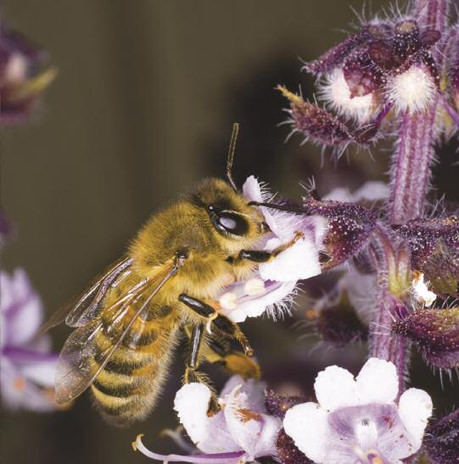FEELING THE STING
Honeybees’ numbers are dwindling.
WRITTEN BY KAY FAHEY
PHOTOS BY KIPPY SPILKER, GEMINAI GRAPHICS & PHOTOGRAPHY
I n 2006, the world woke up to the importance of the humble honeybee. That winter millions of bees vanished globally. What became known as Colony Collapse Disorder had arrived. Since then losses from managed U.S. honeybee colonies have remained constant at about 30 percent annually, according to U.S. Department of Agriculture data.
|
The Buzz Amateur beekeeping Perhaps the best way to fight Colony Collapse Disorder and keep bees busy pollinating (and making honey) is to keep bees yourself. Before you begin, there are a few things you need to do. Leonard Joy of Joy’s Honey Ranch, James Ellis of LSBEES, and Tom Stille of the River School Farm contributed this advice to novice beekeepers: 1) Do your homework. Join a local beekeepers association, subscribe to a beginning beekeeper magazine, and read some basic books. 2) Assemble your equipment beforehand. Come spring, suppliers often are backordered. 3) You also need: * The ability to stay calm around stinging insects * Enough strength to lift 100 pounds * A little room protected from prevailing winds and hot sun * A good supplier (see below)
Northern Nevada Apiculture Society, Reno 775-851-1888 River School Farm, Reno 775-747-2222 LSBEES, Carson City 775-267-1451 Bee Culture magazine 800-289-7668 or Beeculture.com The Backyard Beekeeper by Kim Flottum The Beekeeper’s Handbook by Diana Sammataro |
A hive has CCD when the adult bees take off, leaving the queen and immature bees. There is no trace of dead or dying bees around the hive. Ominously, insect raiders looking for undefended honey won’t touch these hives.
Why care? Imagine a world with no strawberries bathed in cream, no juicy sun-warmed tomatoes, no crunchy almonds baked into macaroons. Honeybees are the world’s most prolific pollinators, and the easiest to manage. Commercial beekeepers truck their hives thousands of miles, following the crops, to keep our tables laden with delectable fruits, vegetables, and nuts.
Without bees, we face the nightmare scenario of going without or laboriously pollinating crops by hand — as is already a reality in one Chinese province. Hand pollinating U.S. crops would cost an estimated $90 million a year, according to the PBS documentary, The Silence of the Bees.
SOLVING THE MYSTERY
Since 2006, researchers have attempted to solve the mystery of the vanishing bees. But bees have been in trouble for decades. In the 1980s, mites wiped out half the U.S. bees, spreading viruses. Beekeepers responded with miticide, but mites appear to have become resistant. Even worse, recent research has revealed that when treated and bees encounter agricultural insecticides, a lethal synergy results.
Many viruses transmitted by mites have been thought to be possible causes of CCD, but none could be positively convicted. Recent research, however, has identified a combination of the invertebrate iridescent virus and the Nosema ceranae fungus as 100 percent lethal. A 2010 study found this pairing in all collapsed colonies, but not in healthy bees.
Pesticides and monoculture continue to be suspected of contributing to the problem. Bees are exposed to multiple pesticides, parasites, and pathogens as they are trucked to fields where they pollinate a single crop at a time. Researchers suspect that this may lead to malnutrition. Plus there are only about half the number of managed beehives in the United States than there were in the 1940s. With the unrelenting pressure for higher crop yields, fewer bees are forced to work harder and harder.
Research now is focused on developing a solution. More information about the virus and fungus is needed, and new techniques for managing bees are being investigated. What is evident is that commercial beekeeping will have to change before all the bees vanish.
Freelance Writer Kay Fahey learned about pollination and gardening from her master gardener parents. She attracts honeybees to her Reno garden with water-wise plants such as lavender, agastache, penstemon, and roses.


